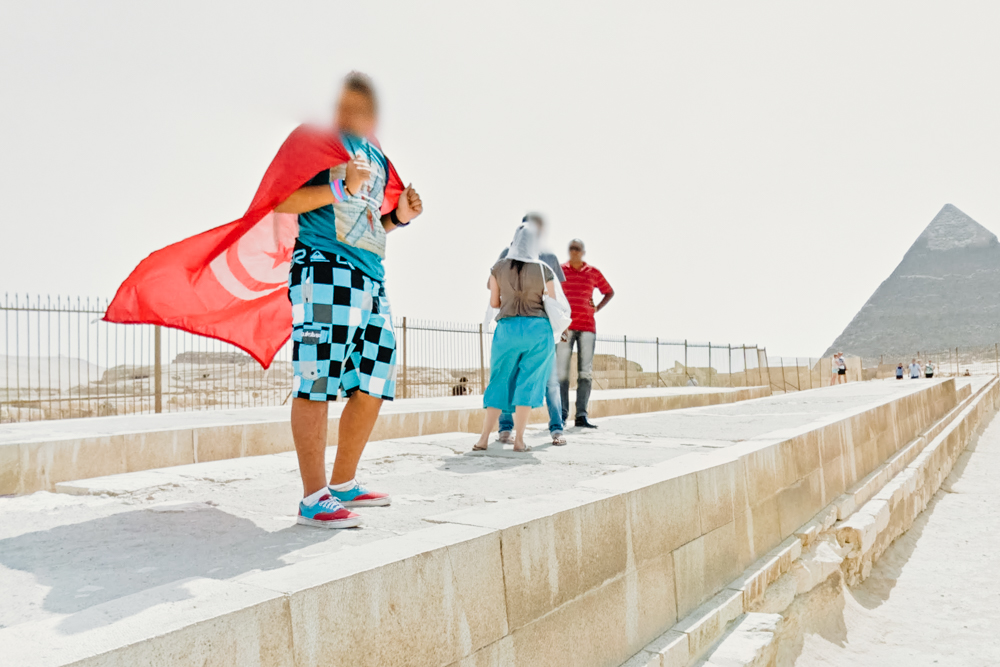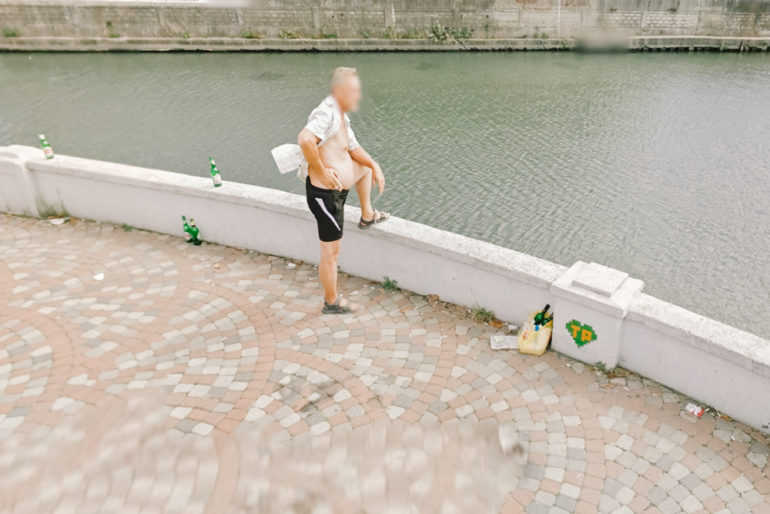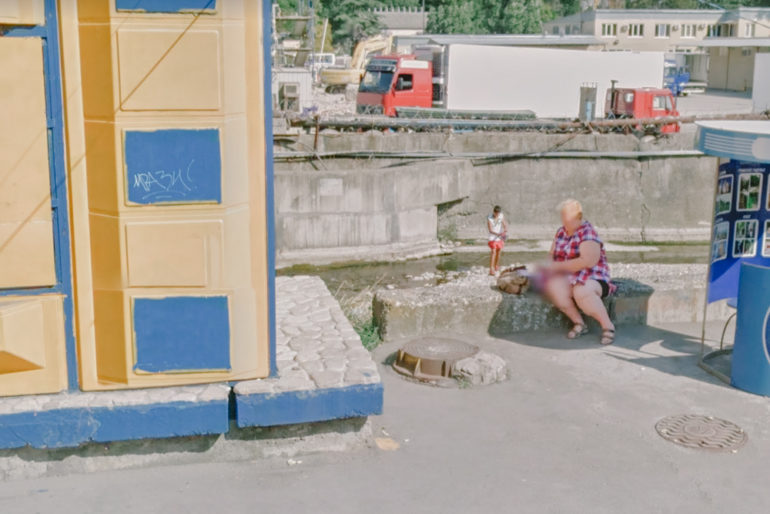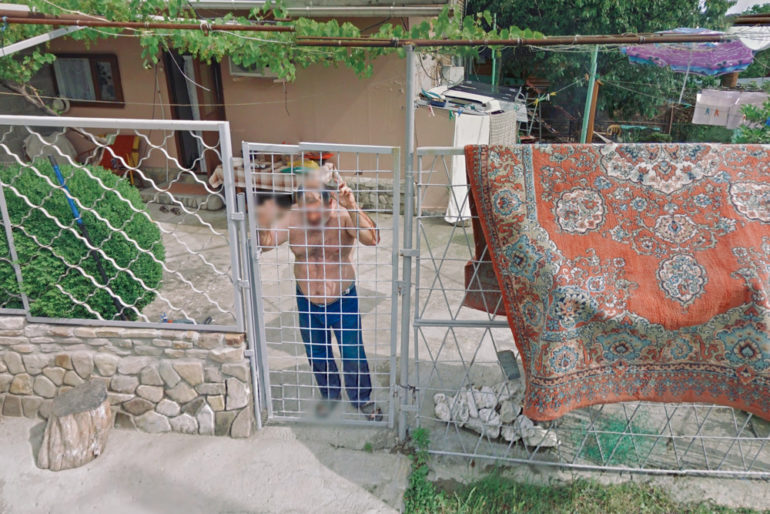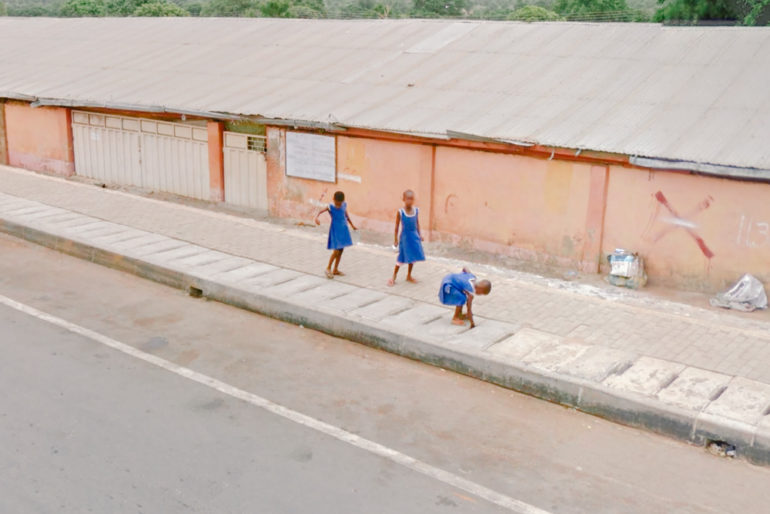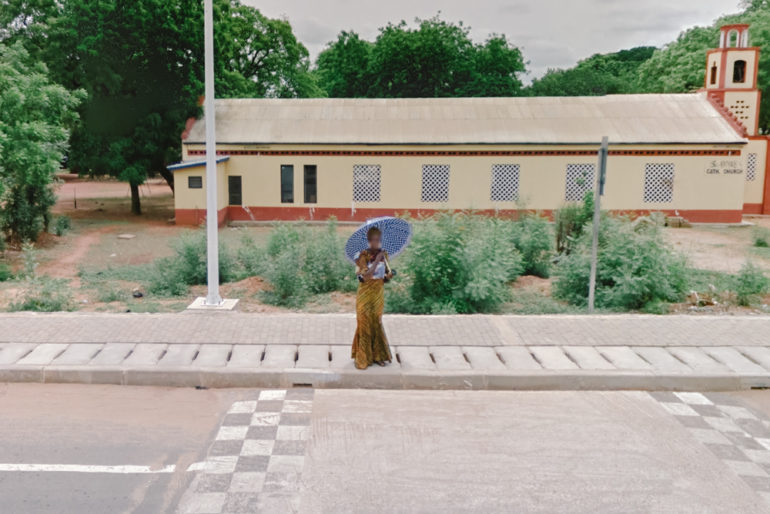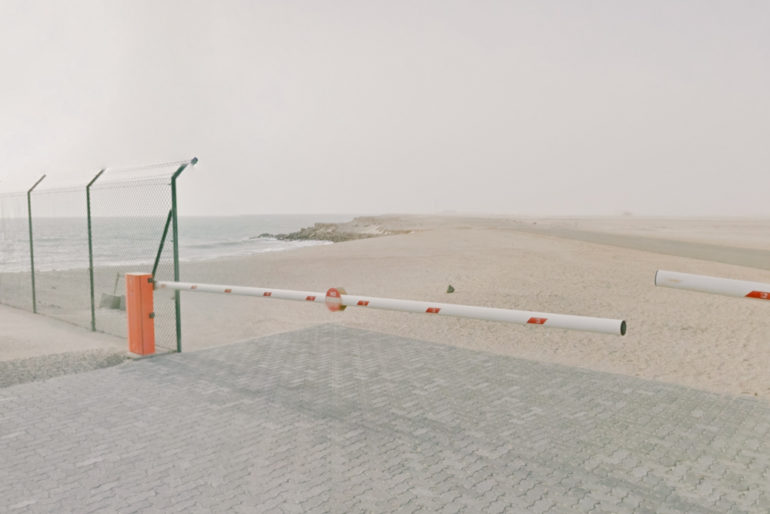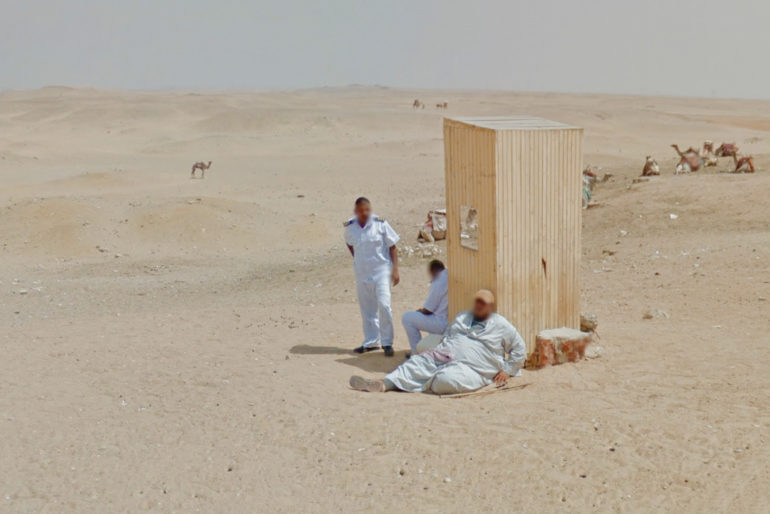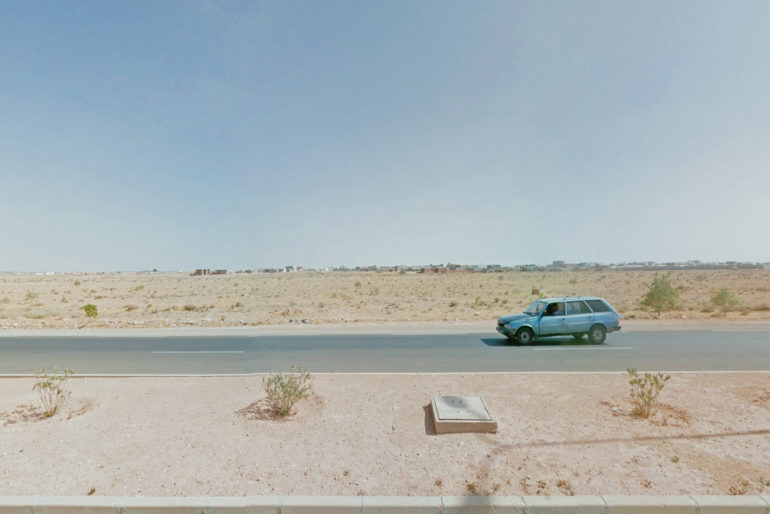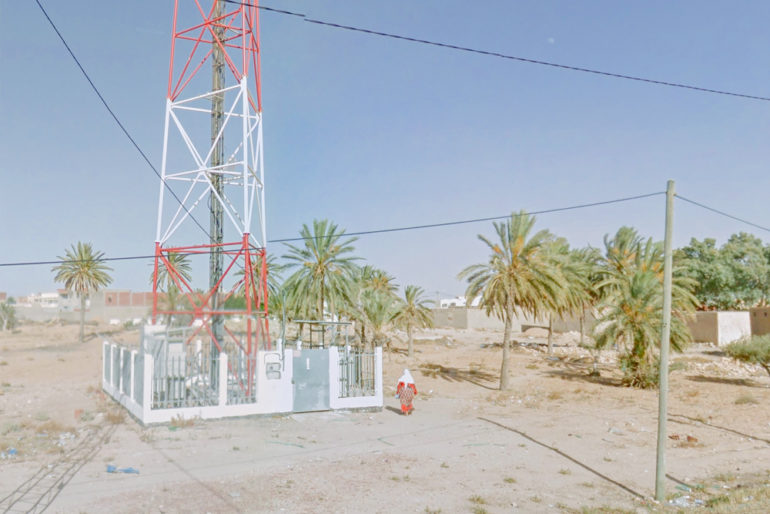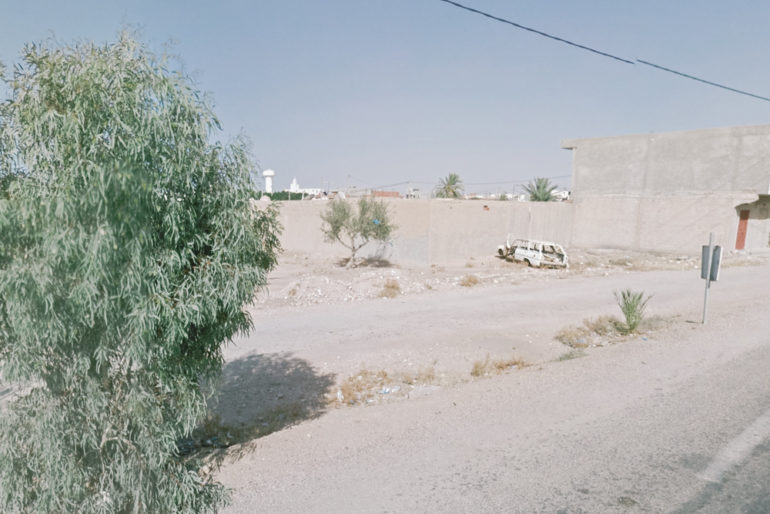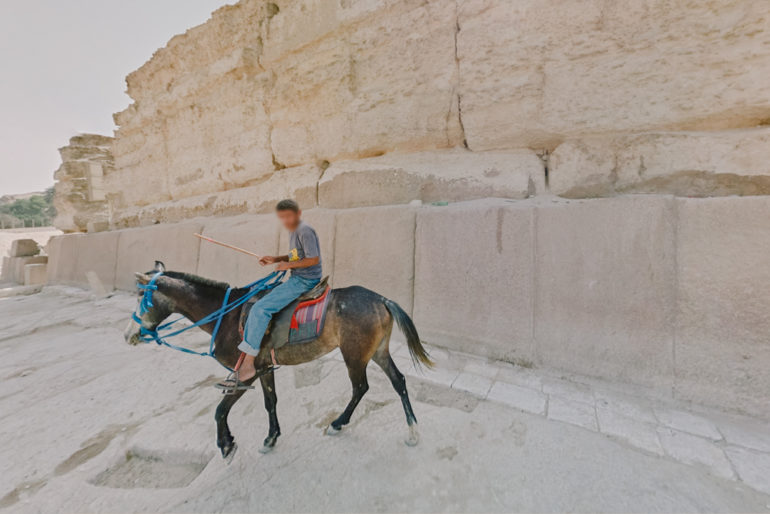Last Updated on 07/19/2017 by Chris Gampat
All images by Jonathan Higbee. Used with permission.
At a certain point earlier on in his Forbidden City project, Jonathan Higbee started to wonder where the project should go. You see, it’s much different from a lot of the work he typically does. Jonathan is a street photographer and surrealist photographer who does some commissions on the side. His work has always been expressive in some way or another, but nothing quite as deep as what’s being portrayed in Forbidden City. Forbidden City is a project that uses Google Street View to showcase places that he and his husband aren’t allowed to travel.
There are lots of questions involved with the curation of a project like this. And indeed, this is a very curatorial project.
Phoblographer: So Forbidden City is a series inspired by your wanting to travel to certain places but are not allowed to simply because of your sexual identity. To traverse those lands, you used Google Maps. Projects like this have been done before but what made you want to do one for yourself?
Jonathan: A few of my favorite photography series from the past five years or so involve Google Street View (especially Jon Rafman), but it didn’t really click with me that it was something I’d ever try myself. And then my husband had an offer to give a presentation at a coding conference in St. Petersburg, Russia. Both of us had dreamed of visiting the city for years and this was the first real opportunity to take the plunge. But ultimately — after research and speaking with a few folks who had lived there and emigrated to the U.S. — we decided it was likely too dangerous for us to visit anywhere in the Russian Federation right now, particularly as a married gay couple. I don’t consider myself someone who avoids a challenge, but with a nasty anti-gay “propaganda” law in full force and a horror story of gay men being rounded up and sent to concentration camps in parts of the Russian Federation, it was an obvious decision. So, I was infuriated by the reality of basically not being able to visit Russia because I happened to have been born gay, and channeled that frustration into this project utilizing a technology that is both unusual and already well-tested in the art world.
Phoblographer: When you went about working on this project, you and I spoke about it and I gave feedback. But from a more personal side of things, how do you think this project evolved from what you originally intended? Do you feel it still completely fulfills your original goals with it?
Jonathan: What immediately comes to mind when I think about unexpected results is some pushback on making work about an aspect of life for gay people. I mean, I’ve been a gay person for a few decades and have firsthand experience with the real anti-gay animus that exists in the world, so I definitely expected there to be a segment of folks who have a visceral negative reaction to anything that deals with the LGBTQ. But what I’m referring to, the reaction I was surprised by from a few corners, comes from people who aren’t anti-gay (at least explicitly) but who were very vocally upset that this project, to them, amounted to Social Justice Warrior-ing. That this whole series simply boils down to Republican vs. Democrat, and could be understood solely through the scope of the current culture wars in the U.S.
It’s naive in hindsight, but I didn’t anticipate this reductive perspective of “Forbidden City.” The response provoked an evolution in some of my approach, to reiterate that this series and issue is not about the left or the right, that it’s not an endorsement of one political ideology and criticism of another. It’s a goddamn reality that queer people in many countries face jail time, public floggings — or, worst of all, state-sanctioned execution — for the “crime” of being born. Dismissing a conversation about these facts of the modern world as nothing more than the ramblings of a suspected SJW doesn’t make sense to me, and makes me wonder what more I need to do to fulfill my goals with “Forbidden City.”
Phoblographer: This project says a whole lot about digital photography and the digital world that we live in. It talks about and shows off how we can explore the world virtually. But at the same time, you’re making a clear statement about the interpersonal, real life experience. So what are your thoughts on simulations vs real life? It seems like real life experiences are difficult to express through the digital platforms used to market them, no?
Jonathan: Such an important question, and a fundamental inspiration for this project. I think it’s a mixed bag when it comes to the realness of experiencing the world through a glowing screen. When it comes to the photography part of it, I genuinely feel almost the same skills and intuition coming into play when I’m photo “walking” on Google Street View as I do when I’m photo walking in the present, physical world. Because GSV captures 360 degrees every step of the way, scanning the environment for a good photo is pretty much just as challenging as usual. You can alter the angle and perspective of the GSV camera slightly, so there are nearly as many decisions to make about composition as usual. Having all the time in the world to make the photo once you’ve made your creative decisions is good and bad: time to get your composition right is nice, but you also only get this particular frozen moment. There’s no waiting for someone to move into a better position or to run across the street to capture better light. But, technically and emotionally, the act of making photography feels largely familiar. If it hadn’t, I’m not sure I would’ve maintained interest in it long enough to make a project of it.
But there is that unmistakable difference that the world of Google Street View cannot compete with when it comes to the non-digital world: a sense of presence. There’s always that nagging feeling, when I’m roaming Google Street View, of physical disconnection. The GSV world lacks the scents and sounds and tactile feedback that help make up one’s complete experience of being somewhere. This experiment has made me wonder how much my total sensory experiences of a location inform the traditional visual art that I make. Does the subtraction of a huge sensual experience of a place make the visual work stronger? Is it possible to capture a place truthfully with these realities? Is it possible to capture a place truthfully when you’re a tourist only there briefly? I don’t know, but not being able to really access and be in these worlds is exactly what the LGBTQ humans living in these locations feel, as a few friends in exactly those shoes have explained.
Phoblographer: When you and I talked about the project, I argued that there should be people in it because spaces are spaces but at times people are what make travel photos. So what made you want to choose these specific areas and photos with people? What was the process of elimination like for you?
Jonathan: There is a lot of open spaces in this project, and I think that was what you were referring to in your feedback that you were kind enough to provide earlier this year. Not a ton of people on view here, and that’s intentional for a few reasons. First, GSV automatically blurs the faces of people its algorithm identifies, which makes working them into the scene a bit different than in my usual photography. I like this about it, it just makes me have to approach the work differently. Another thing is that I’m making images of places that don’t have easily identifiable LGBTQ communities or spaces, so it’s practically impossible, unfortunately, to include the human aspect of this project in the work so literally. Ultimately, the wide-open spaces, landscapes and cityscapes, to me, refer to entire locations that gay people have been deemed unworthy of experiencing. What you see in these photographs are beautiful expanses of our planet that I’ve been forbidden from ever experiencing.
Phoblographer: With your doing this project, a strong statement can be made to say that you’re being more of a curator and aggregator vs a creator. Obviously, Google’s cameras took these images. So when you went about doing this, I’m sure there were times that you were like, “Ugh, I wish they had done so and so.” With that said, what major differences did you learn about being a curator vs a creator for this project? Did it teach you anything about your own work at all?
Jonathan: I love this question! A few close friends I asked for feedback from before revealing this photography project in general wondered if I’d regret that “I didn’t feel any ownership” over the work at some point. This concern never crossed my mind, and I’m fascinated by it. Honestly, this particular feedback encouraged me even more that I was on the right path as the concept of ownership and agency in photography has always intrigued and inspired me.
Maybe it’s just because I mainly shoot street, but I never really feel like I own any of the scenes or photos that I’ve made. The subjects aren’t professional models or actors, the “set” is the living city, the backgrounds are often other people’s advertisements or street art. Sure, I’m there to observe and anticipate it all coming together in a way that makes my heart sink into my chest, but that, to me, feels about it. The GSV camera captures a complete 360 degree void of any intent or creative input. In one way, photo “walking” through the GSV world can feel like appropriation, but in another, it feels like I’m making work that is completely dependent upon me “being there,” observing and anticipating the perfect moment. I don’t expect everyone to agree that this project is more created than curated, and I’m still forming my own opinions. Even if I do decide that “Forbidden City” is just a curation endeavor, it doesn’t decrease my motivation to make it or pride with how it comes together. I don’t think curation takes less skill or vision than creation, but that’s something I’m asking the viewer to decide for themselves.
Phoblographer: How do you think this project would have been different if you had coordinated individuals to use drones, disposable cameras, or actual cameras to aid and create the images for you which you would then legally own because of the “work for hire” statements which give you original creation rights?
Jonathan: You have quite the imagination! Also, such an effort could make for an interesting project. Hmmmm…
I don’t feel like these photographs were created by Google Street View. This project absolutely wouldn’t be possible without Google’s revolutionary product, but I find that comparison kind of like saying Sony is the creator of the work a photographer makes with a Sony camera. I think the biggest distinction that completely separates the scenario you mention and “Forbidden City” is that there is no photographer or artist operating the GSV camera. Google’s camera is being driven down the street atop a van, capturing 360 degree records of the world indiscriminately every second, without regard to aesthetics or color or light, and most importantly, narrative. When I go on a photo “walk” in GSV, I’m the only one making all these creative decisions. So, in your scenario, I’d be surrendering this artistic license, which would make the project less personal, in my opinion.
I believe neither of these types of projects are “right” or “wrong” or better or worse, but they are fundamentally different; I believe that the creative processes employed by the team of photographers in the hypothetical would neuter my vision, a vision that is allowed to flourish in Google’s digitized, indiscriminate reality.
I’ll be the first to admit I’m biased since I’m the one using the Google Street View camera to make a photographic series that I have to then go out and defend. I don’t profess to know the answer to many of these philosophical inquiries, but the questions — these exact questions — really light the fire of inspiration and curiosity within me. I am head over heels in love with the fact that this work can spark conversations about ownership, appropriation, technology, etc. All of these topics are vital to the photographic community as the tools of the trade (and the trade itself) continue to evolve at breakneck speed.
Phoblographer: So is this project done? I feel like there’s a whole lot that can still be said about gender rights for sure.
Jonathan: Right, I agree there’s a whole lot that’s left to be said about the specific issue I’m working with in “Forbidden City” and ancillary concerns regarding international human rights. This project will be done when there’s not a single government left that considers being gay a high crime. I’ll avoid pessimism here and say that I really hope I can then finish this project in my lifetime.
Phoblographer: This is a stark difference from a lot of your other street and conceptual work. Would you say this was a refreshing take and sort of evolution from your street photography?
Jonathan: Refreshing is the right word! Though the process of finding the moments in this series is just as demanding (and maybe even more than) making my other work, the ability to travel instantly around a location is a neat benefit that I wish I could do on a photo walk in the physical world. Please make that teleportation tech happen, Google, haha! The technical realities of editing and processing the work is refreshing, also. There’s only so much post work I can do with a high-res screen capture of Google’s low-res 360 world. But it’s been kind of liberating to not worry so much about perfection, which has been a valuable lesson for me.
In some ways “Forbidden City” is the most personal work I’ve created yet. This project makes me totally vulnerable not only in regards to its content but its method of production, and I am hoping that this experience allows my street, travel and fine art photography to evolve in ways that are even truer to my voice.
_______________________
Forbidden Cities will be exhibited soon at the River Market Regional Exhibition: Truth, Trust, Transcend
Curated by Curlee Raven Holton
Opens July 14, 6 p.m. through September 22, 2017
Mallin & Charno Gallery
201 Wyandotte St, Kansas City, MO 64105
https://kansascityartistscoalition.org


